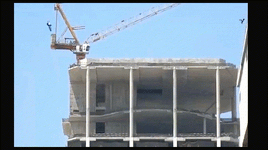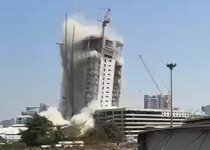human909
Structural
- Mar 19, 2018
- 2,132
I have no engineering commentary at this stage. But this does capture a near complete collapse:
Follow along with the video below to see how to install our site as a web app on your home screen.
Note: This feature may not be available in some browsers.
Greg, maybe they need to design the sides of the pool to mimic a re-entrant combustion chamber so the water doesn't spill out to reduce the mass damping effect.
Found much interesting comments and discussions on X. Getting to be my go to source - but still being careful. Center core column structure and flat slab construction. Similar to construction in the 60's that I am familiar with.Viewed a very long apparently government report yesterday on Youtube. Cannot find it today. Very critical of the situation. Apparently AI composed as I have never seen such a complete report this soon. I searched YouTube and Perplexity for the report; maybe there are better sources some place. Some discussion on the quality of the rebar and the history of the construction. Interesting to note that this is a government building and lots of flat post tensioned slabs and sections.




Videos of the building collapse showed the middle perimeter columns breaking first due to "horizontal forces" generated from the earthquake, said Professor Thai.
"This local failure has triggered the progressive collapse of the entire building that make it collapse very quickly like the 9/11 event in the US in 2021," he said.
"This comes from a poor design issue," he added.

